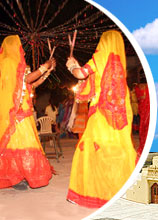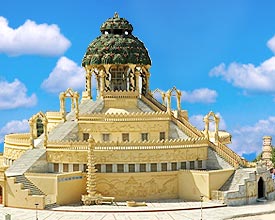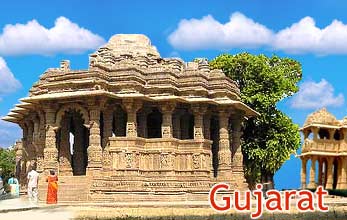 Lothal
is situated at a distance of 80 km from Ahmedabad. It is one of the most
important archaeological sites in India. In the dialect of the local
people language, Lothal means 'the mound of the dead'. The site was
discovered in the year 1957, followed by excavations done by the
Archaeological Survey of India. It was concluded from the excavations
that the ruins of the settlement belonged to the Harappan Era, dating
back to the 2nd millennium BC. It is an exquisite example of Harrappan
town planning.
Lothal
is situated at a distance of 80 km from Ahmedabad. It is one of the most
important archaeological sites in India. In the dialect of the local
people language, Lothal means 'the mound of the dead'. The site was
discovered in the year 1957, followed by excavations done by the
Archaeological Survey of India. It was concluded from the excavations
that the ruins of the settlement belonged to the Harappan Era, dating
back to the 2nd millennium BC. It is an exquisite example of Harrappan
town planning.One of the most interesting sites here is the dockyard. It reveals the fact that Lothal was once one of the major ports in the region. Then, there is the citadel that is divided into two parts, an acropolis and the lower town. The acropolis contains paved baths, while lower town stands laced with residential quarters, coppersmith workshops, sheds and bead factories. Apart from this, the most fascinating feature is the excellent sanitary drainage system of the town. Lothal was an important trade destination till 1900 BC.
The town was destroyed by floods that struck three times. However, this did not weaken the spirit of its residents. Even after being severely struck by floods, they did not abandon the town; rather they reconstructed and restructured it to meet the future calamities. Towards west of the archaeological excavations, there is the site museum. Here, one can see plans, plaster of Paris models and paintings by archaeologists. All this is put together in an attempt to reconstruct what Lothal must have looked like 4000 years ago.
Mirrors of Bronze and Copper, and objects made from stone, shell and bone are enclosed in glass showcases. Other highlights of the museum are perforated and painted potteries, toy bullock carts, beads and jewelry. There are also a number of seals found here, which throw light on the trade prevalent with ancient civilizations of Mesopotamia, Egypt and Persia. According to archaeologists, people believed in animal sacrifice, as an altar has been found there. Thus, Lothal provides an insight into the Indus Valley civilization.









